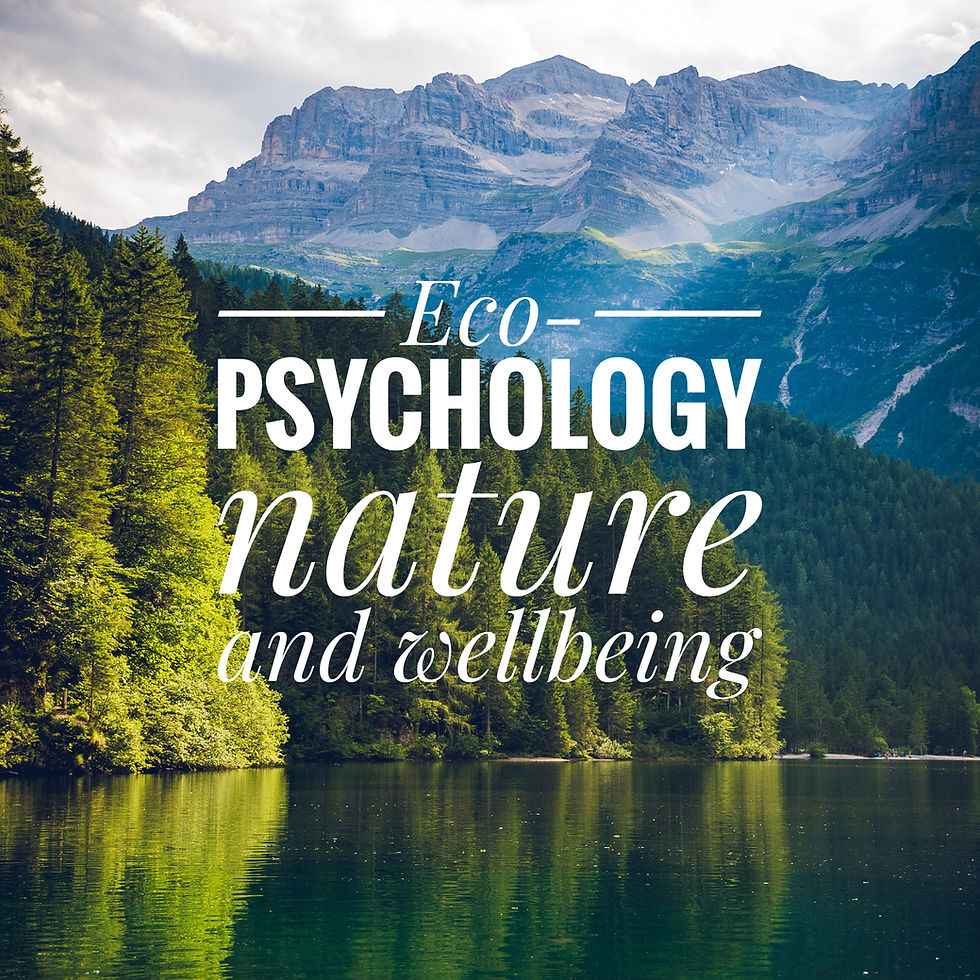Eco-psychology: The Science Behind How Spending Time in Nature Benefits Your Health and Wellbeing
- Tamara@KeystoneCoaching
- Dec 8, 2020
- 3 min read

Throughout lockdown, we were encouraged to spend an hour outside undertaking some form of physical exercise - something we all know directly benefits our health.
What is less well known is that simply spending time in nature, be it in parks, forests or by the sea, has wide-ranging benefits for both physical health and psychological wellbeing.
I can understand why. Who hasn’t felt better after a walk in the woods, a paddle in the sea or a picnic in the park?
A growing body of research suggests exposure to the natural world can lower blood pressure and stress hormone levels; increase self-esteem, empathy and kindness; strengthen immune function; reduce anxiety; improve sleep; calm the nervous system and even boost creativity. Who doesn’t like the sound of that?
One recent study found that ‘shinrin-yoku’ or forest bathing was effective in reducing mental health symptoms such as depression, anxiety, stress and anger. Researchers also discovered this Japanese healing practice exposed practitioners to natural aerosols. Inhaling these during a forest walk led to increased levels of immune system Natural Killer cell activity*, a process which fights tumours and infections. (*Not as scary as they sound, unless you happen to be a virus).
So, what is the optimum dose of nature needed to improve health and wellbeing? Research by the University of Exeter Medical School concluded that people who spent two hours a week or more in natural spaces consistently reported higher levels of health and wellbeing than those who spend less.
The recommended two hours was a clear threshold. There were zero benefits for people who failed to meet that target, and marginal additional returns for those who exceeded. This threshold was present across a wide demographic, including those with long-term illnesses/disability; suggesting that the positive association wasn’t simply due to healthier people visiting nature more often.
Encouragingly, it also didn’t matter how the 120 minutes of contact was achieved, and participants reported similar benefits whether they made one long or several shorter visits per week.
The evidence is there; now what should you do?
Break it down. Not all of us have time in our busy lives to go for a two hour walk each week, but we can probably find 20 minutes a day. Try sitting in the garden with your cup of tea each morning (my go to) or visit a local park in your lunch break.
Why not explore foraging (The Edible City by John Rensten has great advice if you live in urban areas) or simply spending some time with your kids in the park after school or work?
Whatever you choose to do, make sure you remind yourself that you are there to slow down, breathe and restore a sense of peace within yourself.
Ensure you prepare for the weather and, whilst it might not always (ever!) be possible to enjoy a silent walk with children, you can try setting some ‘60 seconds of silence’ challenges and encourage them to really look at their surroundings by spotting really big things and really tiny things.
Oh, and save photos for truly spectacular sights only – it’s the experience that creates the memory. Very soon getting outdoors and engaging with nature will become, excuse the pun, second nature.
Climb the mountains and get their good tidings,
Nature's peace will flow into you as sunshine flows into trees.
The winds will blow their own freshness into you and the storms their energy,
while cares will drop off like autumn leaves.
John Muir
.png)
Comments